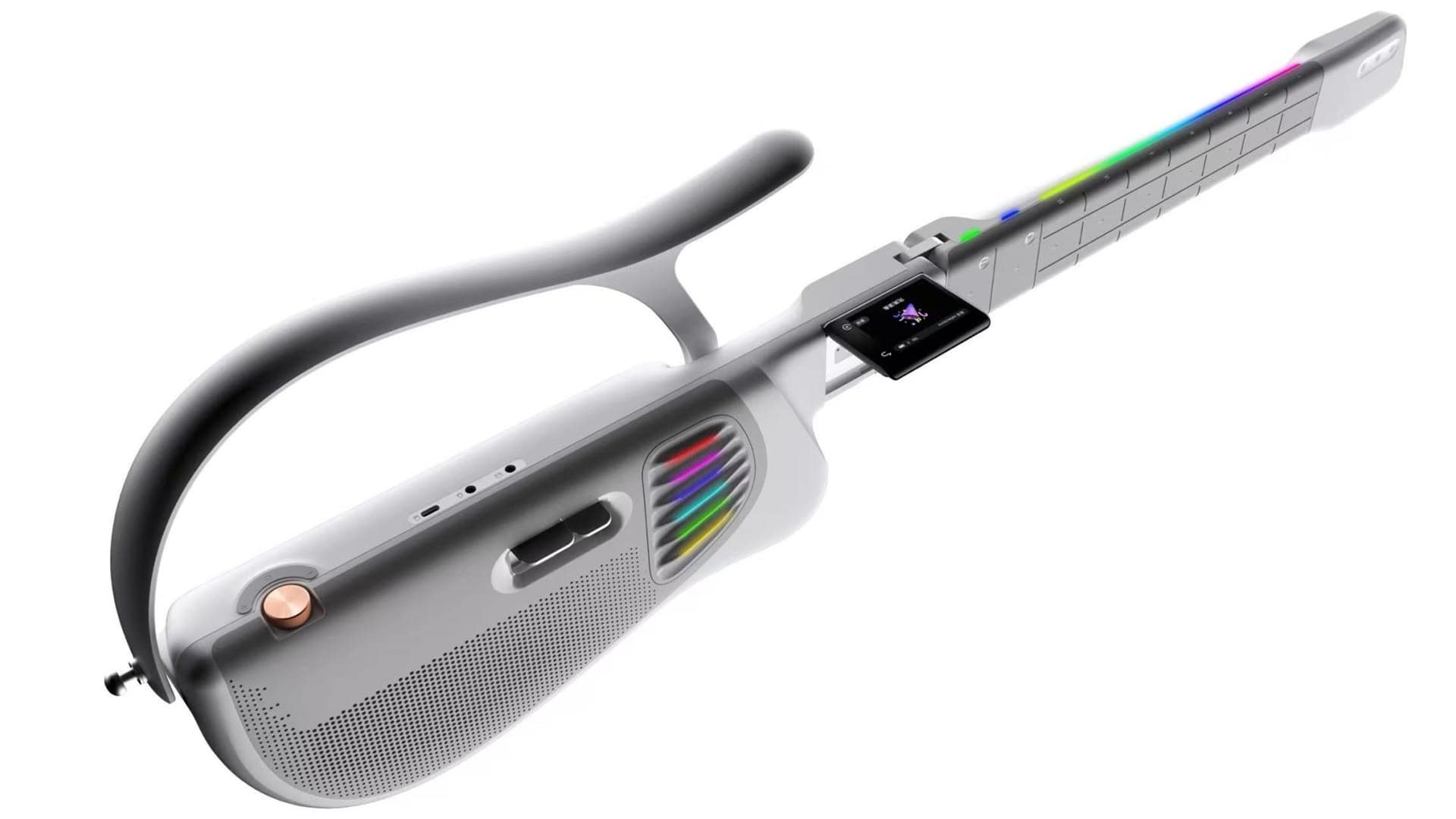While office tools and productivity apps feature heavily among the application formats for artificial intelligence, this year’s Apsara Conference offered a glimpse of what alternative applications might look like. One of them, in the hardware space, is neither a smartphone nor a pair of glasses. Instead, it’s a guitar.
On September 24, Quwan Technology unveiled TemPolor Melo-D, described as the world’s first smart guitar equipped with generative AI.

Unlike most smart instruments that depend on mobile apps, TemPolor is positioned as a self-contained “music generation terminal” that operates independently. It features a touch-enabled flip screen and is designed to provide a complete experience without the need for a smartphone.
Smart instruments aren’t new. Smart guitars, drumsticks, and others have emerged over the years, each with niche followings. But TemPolor’s true breakthrough is its use of generative AI to reshape both music play and music creation.
Users no longer need to practice complex chords or master music theory. By uploading a favorite song, or even just humming a melody, the installed Tianpuyue AI model can reportedly enable the device to generate a fingerstyle arrangement within minutes. The music then appears as visual notation on the guitar’s built-in screen, so any tune in your head can become playable reality.
At the launch, 36Kr tested the AI-assisted singing function. It supports humming aids, segmented practice, and automatic key matching. Traditional music lessons often feel rigid and discouraging, but TemPolor breaks the process into progressive stages: follow along, sing along, and eventually perform independently. This game-like approach reduces frustration for beginners.
For more advanced players, TemPolor offers a freestyle mode. It fully simulates the logic of a real fretboard, and it can map to six real strings, supporting single-note play without compromising professional standards.
This blend of low barriers to entry and ample room for exploratory use recalls some of the product philosophy behind Apple’s early iPhones, not hardware that piles on features, but hardware that redefines the user experience.
TemPolor’s arrival is not accidental. It reflects Quwan’s deep reading of music’s popularization trend and years of practice in the space.
Jia Shuo, who leads the TemPolor team, previously helped develop the Changya app during the mobile internet boom. The app introduced a pioneering interaction mode where users could sing and play without needing instrument skills.
Launched in February 2019, Changya quickly reached more than two million daily active users, earned annual app honors from Huawei, Oppo, Vivo, and Xiaomi, and accumulated 130 million user-generated performances.
Interestingly, Changya’s interface from six years ago looks strikingly similar to today’s companion apps for smart guitars. In a sense, Quwan’s team helped shape the definition of smart guitars long before the hardware caught up.
Changya’s success also confirmed strong demand among non-professionals for accessible music-making. Yet smartphones still limited what music apps could do. With the rise of generative AI, new experiences can no longer be fully realized within mobile devices. That led to TemPolor.
TemPolor taps into Quwan’s self-developed music generation model, Tianpuyue. The model is multimodal, capable of generating music from text, images, audio, and even video.
Building on the same foundation, the Tianpuyue team began closed testing in August for a conversational AI music agent called Tunee, which entered global public beta on September 26. Tunee is designed to act like a tireless, collaborative music partner, using dialogue to understand user needs and generate commercial-grade music, even including multitrack files.
Looking back, history’s most disruptive hardware has never just been about stronger specs, but about redefining the experience.
TemPolor offers a reinterpretation of what a musical instrument may represent. No longer only a tool for performance, it could be construed as a medium for expression. In an era where most AI-driven products focus on efficiency, whether to write code, design layouts, or optimize workflows, few explore how AI can enhance human expression and creativity.
At the Apsara Conference, Jia explained his thinking: Tunee and TemPolor represent two directions for AI applications. One prioritizes efficiency, the other experience.
Few global tech companies today combine all three forms, self-developed models, AI applications or agents, and smart hardware. But the trend is clear. Reports that OpenAI will release its first piece of hardware next year, alongside Google’s and Apple’s ongoing exploration of generative AI with devices, show that leading firms are moving beyond software toward a holistic offering integrating models, hardware, and ecosystems.
Quwan’s approach with Tianpuyue, Tunee, and TemPolor aligns with this direction, only it remains firmly rooted in music. Through deep integration of models, agents, and hardware, it enables anyone passionate about music, even those without theory knowledge or instrumental skills, to step freely into the world of sound.
KrASIA Connection features translated and adapted content that was originally published by 36Kr. This article was written by Xiao Xi for 36Kr.
